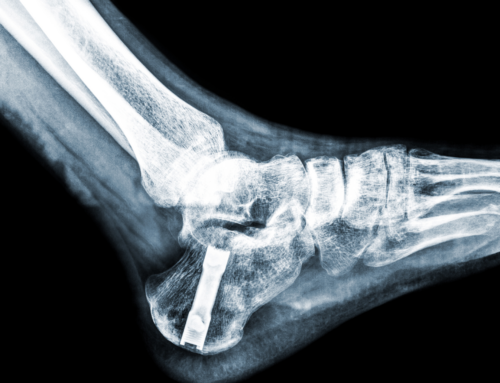Did you know that mallet toe is a rare enough condition that we don’t know precisely how many people deal with it each year? According to the News Medical publication, there is one case of mallet toe for every nine cases of hammertoe. While mallet toe is rough, it’s far from rare enough that we don’t have treatments for it.
But what surgical treatments are there for the condition, and what is mallet toe surgery recovery like? From post-surgery care to the most important foot health tips, we’re here to help.
If you’re curious about mallet toe surgery, here’s everything you’ll need to know.
- What is mallet toe?
- How is mallet toe treated?
- Mallet toe surgery options
What is Mallet Toe?
To start, what is the mallet toe condition? How is it different from conditions like hammertoe?
Mallet toe is a deformity that affects a specific joint in your foot – the top toe joint closest to your toenail. Mallet toe makes the tip of your toe curl downward instead of lying flat.
According to Cleveland Clinic, the condition most often affects your second toe. That’s because this is your longest toe, but it can also affect your third or fourth.
Mallet toe also comes in two types:
- Flexible mallet toes can be bent back to their normal shapes. Typically, no surgery is needed
- Rigid mallet toes are stuck in their position. Most often, surgery is reserved for this condition
While flexible mallet toe is less severe, it can still need surgery. Make sure you visit your doctor immediately.
How is Mallet Toe Treated?
There are several ways to treat toe deformities. Here are the most common.
At-Home
The good news is that many at-home treatments won’t require surgery. If you’ve let your hammer toe go for too long, this isn’t often the case.
At-home treatments often include braces or splints to force your toes to move straight. You also will wear orthopedic footwear in many cases. Supplements and pain relievers are often prescribed.
Minor Surgeries
Minor surgeries are necessary for severe cases of mallet toe. These surgeries are minimally invasive, which also means the recovery is often short.
Your surgery sometimes will include a tenotomy, which only means surgery on a tendon. That’s because a contracted flexor tendon is often the cause of mallet toe. Other choices are a tendon transfer or joint fusion, according to the previously-mentioned Cleveland Clinic article.
Making the Most of Your Recovery
Mallet toe is uncomfortable, but rarely a severe health risk. Make sure you understand post-surgery care and proper mallet toe surgery recovery if you undertake a surgery. Afterward, follow foot health tips to keep your mallet toe symptoms gone for good.
Here in Boise, the Flint Foot & Ankle Institute is proud to be the top foot care provider. We provide care to all parts of the foot, from bunions and heel fractures to ankle fusion, hammertoe, and mallet toe. Contact us today to see how we can help you live your best life.




